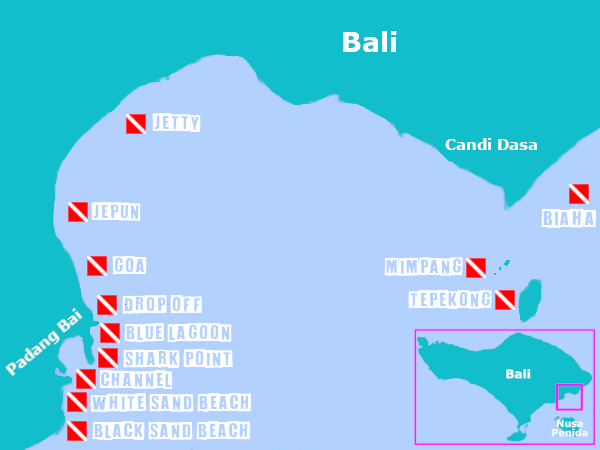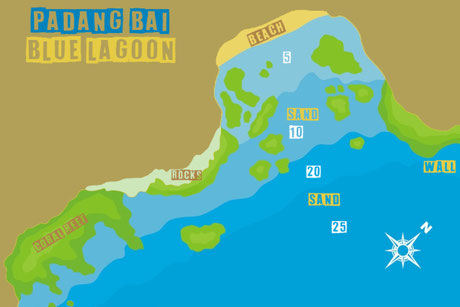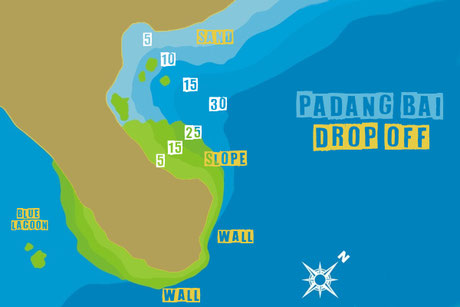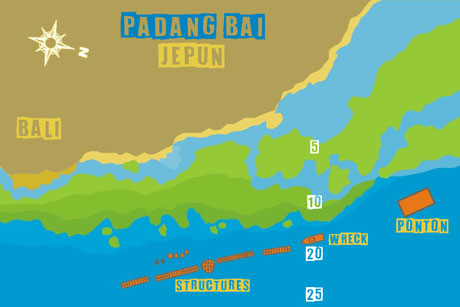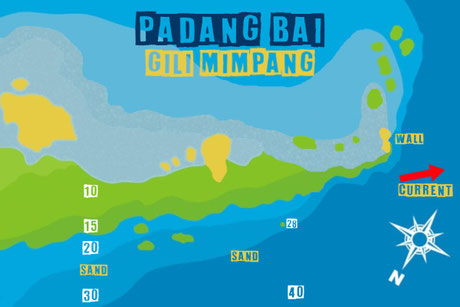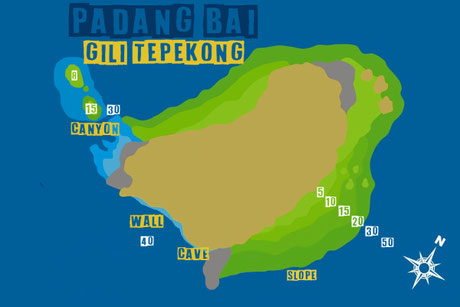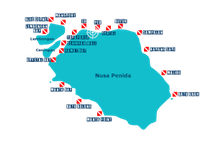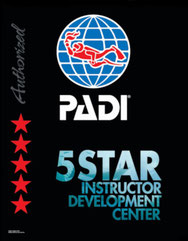Bali Dive sites from Nusa Penida
Diving in Padang Bai from Nusa Penida
Amuk Bay and Padang Bai in Bali are less than 20 minutes away from our Nusa Penida dive center. With more than 15 dive sites, Padang Bai and Amuk Bay have unique flora and fauna. The most popular diving sites are undoubtedly Blue Lagoon, White Sand Beach and Jepun, indeed they are suitable for all level of divers. Beginners will thrive with the corals and the many reef fish and experienced macro enthusiasts will rave about the macro richness so rare in the world.
The great strength of Padang Bai is the dive site diversity, with both easy dive sites and those with a lot more challenge such as Channel and Black Sand Beach. Another great advantage is our proximity to the dive sites of Mimpang, Tepekong and Biaha, a mecca for large pelagics such as mola mola and sharks. Our one-dive mola mola record is in Mimpang (11 mola-mola at the end of 2019).
Blue Lagoon
Macro underwater world
Blue lagoon
Blue Lagoon is Padang Bai's most famous dive site. Its great strength is its versatility. No doubt Discover Scuba Divers (DSDs) as well as seasoned photographers will be thrilled with the underwater life. This site has a great diversity of flora and fauna and an easy topography with several different substrates.
- Difficulty : Beginner to expert
- Max depth : 30 m
- Visibility : Really good to low
- Temperature : 20 to 29 (average 24°c)
- Current : None to mild, surge possible
The Blue Lagoon dive site has different sections. The shallow part near the beach is the beginner's playground. It is perfect for discover scuba diving with the white sandy bottom increasing the contrast with the colorful coral formations. The sandy slope sinks gently down to 30 meters. Advanced divers can go close to the Drop Off bottom looking for the plentiful macro marine life and then head south and finish the dive in the shallower water near Shark Point dive site. The shallow end is very rich in corals and reef fish such as sweetlips, angel fish, surgeons, and moray eels ... It is not rare to find frog fish, ghost pipefish, various nudibranchs, harlequin crabs, candy crabs, and sea horse as well... Blue lagoon is a fabulous playground with a lot of options suitable for all levels.
Drop off
Drop Off or Baung Penyu (turtle neck) is a popular dive site for all divers. Macro fauna with a unique topography is a winning combination for a great dive. This dive site is particularly appreciated by photographers.
- Difficulty : Beginner to expert
- Max depth : 32 + Max
- Visibility : Really good to low
- Temperature : 20 to 29 (average 24°c)
- Current : None to strong
Drop off is a very versatile dive site depending on whether there is current or not, you can start it from the north or from Blue Lagoon. The Drop Off is quite short and can be done quickly. The most interesting part is the north of the turtle's neck with a nice slope, two different substrates (sand and corals) where the macro fauna will soon show itself. We like to start it a bit further to the north, where we see fields of black coral and a big colony of soft corals. What we can "spot" at drop off? Seahorses, candy crab, fire urchins with Coleman shrimp, Rhynopias (Frondosa and Eschmeyeri), coral catshark, pom pom crab and many other macro fauna. We also regularly see schools of mackerel, small tuna, cuttlefish, and octopus ... This is a dive site that we love to dive as it contains many surprises.
Jepun
In Indonesian, Jepun is the flower of the Plumeria tree or the Bali Frangipani. It is a very long dive site and it is difficult to do all of it if there is no current. Its particularity is a small wreck easy to access for Open Water divers.
- Difficulty : Beginner to expert
- Max depth : 28 m
- Visibility : Really good to low
- Temperature : 20 to 29 (average 24°c)
- Current : None to strong
Jepun dive site is somewhat protected from the swell and therefore it is almost always possible to dive it regardless of weather conditions. There are 3 main parts and to be able to do all 3 in a single dive you must not linger too much and have a low air consumption.
The northernmost part after the Pontoon is really reserved for macro or even muck diving only sand, algae and sponges, the perfect place for juvenile macro, baby frogfish, ghost pipefish, and hairy octopus. There is also an old sunken barge often full of macro creatures. Even better, this area is rarely crowded with other divers.
Between the pontoon and the wreck, often the entry point for most diving centers, there is a gentle slope and a sandy bottom around 18m. The small wreck is great for beginners and is a great area to spot moray eels, leaf scorpionfish and frogfish.
The final area of the dive consists of structures and statues. At the last concrete block structure, at 12m, you will often find juvenile white tip reef sharks resting. There is lots of life at the end of the dive: nudibranchs, cuttlefish, octopus, juvenile sharks, triggerfish and more...
Gili Mimpang
Gili Mimpang is definitely one of our favorite dive sites for mola mola. It is a more "mineral" dive than in Nusa Penida but the encounters and the topography are worth the detour. Gili Mimpang is not a dive site for beginners as the conditions can sometimes be challenging.
- Difficulty : Advanced to expert
- Max depth : 40 m
- Visibility : Good to low
- Temperature : 19 to 29 (average 24°c)
- Current : None to strong with surge
Gili Mimpang is an extraordinary dive site as it can hold many surprises. This is one of the best dive sites in Bali to see Mola Mola during the season. To be able to dive Gili Mimpang you must be at least Advanced Open Water and have a fair amount of dive experience. Gili Mimpang is made up of 3 small groups of islets and we start the dive north of the middle one. The strong southerly current will bringus to the South where we will turn into a sheltered area. Along the way we are looking into the blue to see schools of fish, barracuda, tuna hunting, sharks and of course the Mola Mola. Air goes down quickly in your tank at Gili Mimpang. When air allows we will continue around the islet with beautiful corals and abundant marine life. Otherwise, we may be drifting in open water during our safety stop!
Gili Tepekong
Gili Tepekong is one of Bali's most challenging dive sites. It is imperative to have good guides because we do not do it in the same way depending on the conditions. For experienced divers, this is one of our most popular sites where we often see sharks and mola mola!
- Difficulty : Advanced to expert
- Max depth : 40 m
- Visibility : Really good to low
- Temperature : 19 to 29 (average 24°c)
- Current : None to strong with surge
Gili Tepekong is one of our owner's favorite dive sites. When the conditions allow it, the dive site is one of the most playful in Bali. A drop off, swimthrough, play of colors in the shallow parts, a strong surge and current -this site has it all! Tepekong is a dive site for the Mola Mola in season but the topography is so nice that we never get bored of doing it all year long. With a wall, caves, and a canyon, regardless of conditions, there is always something exciting to see. Our experienced captains and guides will ensure a good dive while keeping safety a top priority -here we don't mess with Mother Nature!
Gili Biaha
Gili Biaha is an impressive dive site. The main attractions are a cave with sharks and a drop off composed of volcanic flows like pillars. A dive site for Mola Mola and abundant fauna, especially on the extreme south wall.
- Difficulty : Advanced to expert
- Max depth : 30 m
- Visibility : Really good to low
- Temperature : 19 to 29 (average 24°c)
- Current : None to strong with surge
The Gili Biaha dive site is relatively uncrowded as it is only for fairly experienced divers. The site requires experienced guides who are able to analyse surface conditions and tricky current. When the conditions are good it is a masterful dive site and one that you will not be able to forget! The special feature is the shark cave. The entrance of the cave is at 9m. The cave is home to reef sharks but the sensations come from the pressure changes ... Indeed the swell coming from the SouthEast, each wave hitting the island will increase the pressure in the cave, you can really feel this (rib cage, mask, ears)! After a few minutes in the cave, we begin the nice drop off towards the South. The drop-off is made up of large pillars of volcanic rock, it is quite impressive especially with the swell. At the southern tip, the currents cross and it is there that life is the most dense, thousands of fish of all kinds pass and repass. It is not uncommon to see tuna hunting as well as the Mola Mola coming to be cleaned. A dense fauna rich in diversity. Be careful, down-current is not rare and you have to adapt the dive according to the conditions.
Jetty
Jetty in Amuk Bay is a very unusual dive site in Bali. A dive entirely under an old jetty. The shadows from the jetty overhead creates a unique ambiance and the macro life will surprise you. This is a dive site that people either love or hate.
- Difficulty : Advanced to expert
- Max depth : 30 m
- Visibility : Really good to low
- Temperature : 19 to 29 (average 24°c)
- Current : None to strong with surge
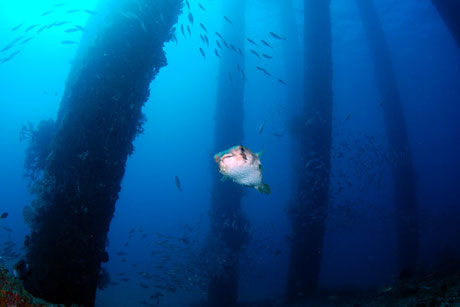
The Jetty dive site is undoubtedly one of the best in Bali to do a different dive and rich in macro. It is a dive site with a different atmosphere: surrounded by columns, a shadowy area under the pier and the light coming from the sides. Lots of light effects and a discreet but very real fauna. A downside, like all jetties in Indonesia, there can be a lot of waste but we can say that it has improved admirably since the end of 2019. The site is almost impossible to do when there is current, but when conditions allow, we love Jetty because you are almost guaranteed to see frogfish and we love them. Ghost pipefish, sea horses, octopus, nudibranchs, rhynopias and many more fish and creatures abound.
Secret Patch
This small , special dive site is perfect for photographers and macro enthusiasts! We have never seen other divers on this small oasis surrounded by sand...hence the name, "Secret Patch".
- Difficulty : Advanced to expert
- Max depth : 27 m
- Visibility : Really good to low
- Temperature : 18 to 28 (average 24°c)
- Current : None to strong with surge
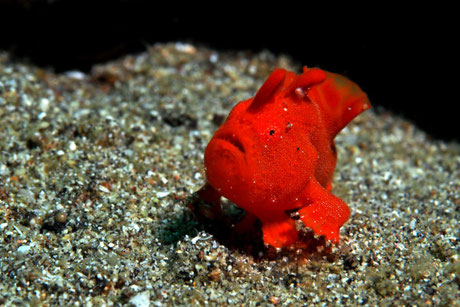
Our owner, with over a decade of Bali diving, discovered this site and only a handful of divers know of its location. We love this site because this tiny (350m²) oasis is surrounded by sand and a great deal of juveniles call this area home. It is not only great for photographers and current macro lovers, but also a great spot to learn to spot macro live. At the peak times of year, it's not uncommon to spot several species of juvenile frogfish, different ghost pipefish, hairy and blue ring octopus, histrix seahorses, and incredible nudibranchs! You are sure to discover all sorts of the ocean's oddities at Secret Patch!
Because the site lies between 17-24m, diving with Enriched Air Nitrox has definite advantages.
Goa
Goa is a small dive site between Drop Off and Jepun. Its name comes from the many statues of Hindu deities that rest here courtesy of Padang Bai dive shops. It is also the place where Padang Bai dive centers conduct their coral propagation courses.
- Difficulty : Beginner to expert
- Max depth : 32 m
- Visibility : Really good to low
- Temperature : 18 to 28 (average 25°c)
- Current : None to strong with light surge
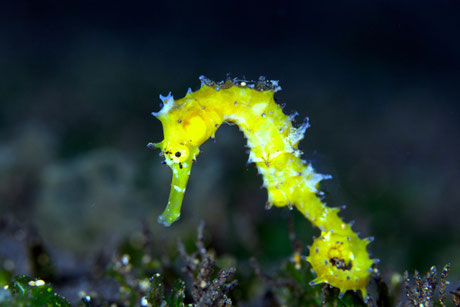
Goa is not a very busy dive site because most of the dive centers in South Bali stick with the "classic" Blue Lagoon and Jepun dive sites. Goa is quite large and is ideal for training dives with its large shallow plateau. We like its topography with a gentle slope to 16 m and then a series of small valleys. The deep part is rich in black coral with a good density of macro fauna. We like to start at Goa and finish on Drop off, it's a fairly easy dive and ideal for beginners. However, be careful from January to March (nesting period), we have renamed it "trigger-fish alley" because of the many titan triggerfish defending their territory!
Shark point
The dive site of Shark Point or Silayukti Point (since the entry point is in front of Silayukti temple) is one of the major dive sites of Padang Bai. Nice topography, lots of big coral formations with little sharks resting. A dive site that will delight a great number of divers.
- Difficulty : Beginner to expert
- Max depth : 30 m
- Visibility : Really good to low
- Temperature : 18 to 28 (average 25°c)
- Current : None to strong with surge
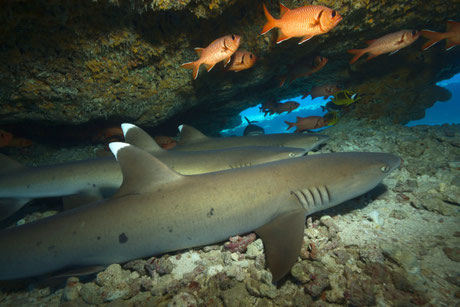
Shark Point, is a fairly large dive site that must be navigated differently depending on currents. Normally we start the dive in front of the temple (south of Blue Lagoon) where many coral colonies set the tone. The most interesting part is the large plateau where you will see the numerous pelagic fauna coming into the bay. The dive site often has a light head-on current and is perfect for returning to the entry point at shallower depths. We love the sharks living in the area but also the many rays who like to come and feed in this part of the bay. This is a dive site to explore and which will satisfy all types of divers.
Channel
Channel is the iconic Padang Bai dive site. Reserved for experienced divers due to its location right on the ferries route. Here the plan must be followed, no ascent in the channel because ferries cannot stop to avoid the divers! We love it...
- Difficulty : Advanced to expert
- Max depth : 32 m
- Visibility : Really good to low
- Temperature : 18 to 28 (average 25°c)
- Current : None to strong with surge
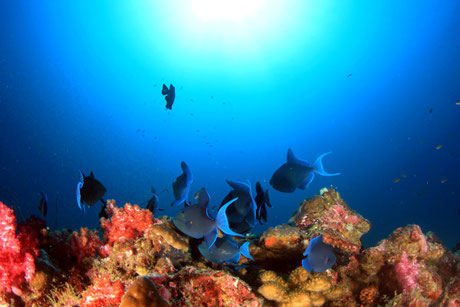
This dive site is only for experienced divers who can and will follow a dive plan. It is impossible to surface in the middle of the channel. But for the right diver, this dive site is simply fabulous! You can often spot lobsters and sea fans with pygmy seahorses on the dive. Experienced guides are essentiela to safely determine the entry and exit points. This one of our favorite Bali dive sites without a doubt.
White Sand Beach
The White Sand Beach (or Bias Tugal in Indonesian) is one of the busiest dive sites in Padang Bai - a favorite for south Bali dive centers. It has an incredible fauna which is ideal for beginners. However, you must be careful with the currents and not drift into the ferry channel.
- Difficulty : Beginner to expert
- Max depth : 40 m
- Visibility : Really good to low
- Temperature : 18 to 28 (average 25°c)
- Current : None to strong with surge
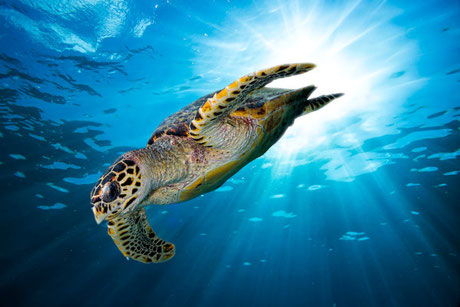
The wide, shallow plateau is a beginner's paradise: green and hawksbill turtles are common. Throughout the plateau a slight slope from 12 to 25 meters depth allows divers to come and look for macro fauna, the shallow part is very rich in soft corals and full of colors. Beyond is a forest of soft corals and giant sea fans. Perfect for our divers who want to experience a Bali deep dive. Depending on the current the dive can range from easy to "adventurous" but we will make sure that it suits your level.
Black Sand Beach
This dive site is rarely used which offers the uncommon experience of diving without seeing other divers. Its particularity is undoubtedly the presence of pelagic or "fat guys" as we say in our jargon.
- Difficulty : Advanced to expert
- Max depth : 34 m
- Visibility : Good to low
- Temperature : 18 to 28 (average 25°c)
- Current : None to strong with surge
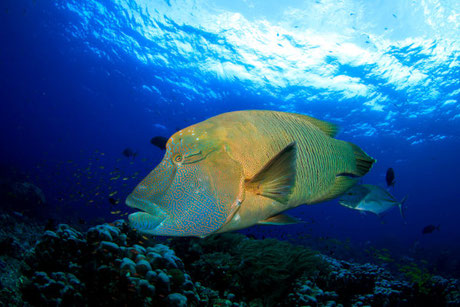
Black Sand Beach is without a doubt our "private dive site" in Padang Bai. When the currents allow it, the dive site is ideal for a drift towards south of the bay of White Sand Beach. The beginning of the dive is mostly macro until the current starts to rise. This is the time to focus on big fishes: Mola Mola, giant trevally, even dolphins have been spotted here. Nothing here can be certain as the currents can change - until we call it a "washing machine"! But it is precisely under these conditions that we have had the best videos of the rarest specimens swimming in Balinese waters. An exceptional dive site that we do not give to everyone ...
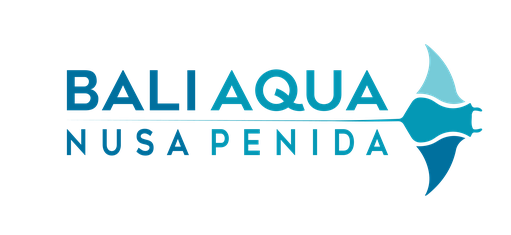
Jalan Raya PED, Buyuk - Nusa Penida - 80771, Bali
Dive center Whatsapp : +62 823 3975 1705
Reservation (wa): +62 812 3727 0003
- Quick Link -
Bali Aqua © 2008-2025 "made with love and lots of diving enthusiasm"

